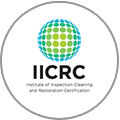Imagine waking up one morning to the sound of thunder, rain pounding against your window, and gusty winds shaking your house. As you hurriedly make your way to the kitchen, you notice water dripping from the ceiling, and your heart sinks. In that moment, you realize that your life is about to change.
Storm damage is not just about the physical destruction it brings; it is also about the emotional and financial toll it takes on individuals and entire communities. The aftermath of a storm can leave you feeling overwhelmed, devastated, and uncertain about the future. But amidst the chaos, there is hope.
Storm damage recovery is a process that can lead to transformation. It is an opportunity to rebuild, to strengthen, and to emerge stronger than ever before. By taking the right steps and having a plan in place, you can navigate through the challenges and experience a silver lining in the face of adversity.
In this article, we will guide you through the journey of recovering from storm damage. From the initial response after a storm, to navigating the insurance process, to tackling restoration and repair, to implementing preventative measures for the future, we will provide you with the insights, tips, and resources you need to bounce back and reclaim your life.
Let’s embark on this transformative journey together. It’s time to turn the page and embrace the possibility of a brighter tomorrow.
Key Takeaways:
- Storm damage is not just about physical destruction, but also emotional and financial toll.
- Recovering from storm damage is an opportunity for transformation and rebuilding.
- By having a plan in place and taking the right steps, you can navigate through the challenges.
- This article will guide you through each step of the storm damage recovery process.
- Together, we will help you find hope and emerge stronger than ever before.
Initial Response – First Steps After a Storm
After experiencing a storm, the safety of individuals and their properties should be the top priority. Taking immediate action is essential for assessing storm damage and ensuring the well-being of everyone involved. Here are some crucial steps to consider in the initial response after a storm:
Safety First
Before inspecting or assessing any damage, it is important to ensure personal safety and the safety of others. Stay away from downed power lines, damaged structures, and flooded areas. If there is a risk of structural instability or other hazardous conditions, it’s crucial to wait for professionals to assess and mitigate the situation.
Assessing Property Damage
After ensuring safety, it is necessary to assess the damage to the property. Begin by inspecting the exterior, checking for any visible signs of destruction, such as fallen trees, roof damage, or broken windows. Take note of the areas that require immediate attention.
It is equally important to assess the interior of the property for any structural damage, leaks, or other issues. Pay close attention to ceilings, walls, and floors, as these areas may indicate hidden damage. Take photographs and written descriptions of all the damage to document the extent of the loss accurately.
Contact the Necessary Authorities
If there are emergency situations or hazards that require immediate attention, it is crucial to contact the necessary authorities or emergency services. In case of severe damage, it may be necessary to contact local law enforcement, fire departments, or utility companies for assistance. Reporting any unsafe conditions can help prevent further harm or danger.
By prioritizing safety, assessing property damage, and contacting authorities, individuals can take the necessary initial steps to address storm damage effectively. These actions lay the foundation for a smoother recovery process and ensure the well-being of all individuals involved.
Insurance Process – Navigating Claims and Coverage
After a storm, one of the most important steps you need to take is contacting your insurance provider as soon as possible. Timely communication is crucial in ensuring you receive the storm damage insurance coverage you need. When reaching out to your insurer, be prepared to provide the necessary information and documentation to support your claim.
Effective communication is key when filing an insurance claim. Clearly explain the extent of the storm damage to your property, both inside and out. Describe any visible damage and provide supporting photographs or videos if possible. This documentation will serve as proof of loss and strengthen your claim.
Creating an inventory of damaged items is also vital. Include details such as the purchase date, value, and condition of each item. This inventory will help ensure that you are appropriately compensated for the items lost or damaged due to the storm. Remember to keep receipts or other proof of purchase for damaged items, as these will further support your claim.
Understanding your insurance policy coverage and any deductibles that may apply is crucial in navigating the claims process. Take the time to review your policy and consult with your insurance provider if you have any questions. Being knowledgeable about your coverage will empower you to make informed decisions.
During the assessment process, you will likely work with an insurance adjuster who will evaluate the storm damage and determine the extent of your insurance coverage. Be proactive in providing them with the necessary documentation and cooperating throughout the process. This will help ensure a smooth and efficient claims experience.
Restoration and Repair – Tackling the Aftermath
When it comes to storm damage, it’s crucial to address the aftermath promptly and effectively. Hiring professional restoration services can make a significant difference in the quality and speed of the repairs. Restoration contractors specialize in storm damage restoration and have the expertise and resources to handle even the most extensive damage.
When hiring restoration contractors, it’s essential to research and select reputable professionals. Look for contractors with a proven track record and positive customer reviews. Obtaining multiple quotes and comparing services can help ensure you get the best value for your money.
Before making a decision, check that the contractors you are considering are properly licensed and insured. This protects you from liability and ensures that the work will be conducted according to industry standards.
Keep in mind that some storm damage repairs may be suitable for a DIY approach, especially for minor damage. If you decide to take the do-it-yourself route, always prioritize safety. Use appropriate safety gear, follow safety precautions, and know your limits. Minor repairs such as fixing exterior siding, shingles, or windows can be tackled with proper guidance and tools.
However, it’s crucial to recognize when a job is beyond your expertise. Major structural damage, electrical work, or complex repairs are best left to professionals.
Additionally, depending on local regulations, you may need to obtain necessary permits for certain repairs. Be sure to check local building codes to ensure compliance and avoid any issues down the line.
In conclusion, hiring professional restoration contractors can provide peace of mind and ensure that storm damage repairs are completed efficiently and to a high standard. However, for minor damage, taking a do-it-yourself approach can be a cost-effective option. Remember to prioritize safety and know your limits. By following these tips and precautions, you can navigate the process of restoration and repair to get your property back to its pre-storm condition.
Preventative Measures – Protecting Your Property Pre-Storm
In order to minimize the potential damage caused by storms, it is crucial to prioritize storm preparedness and take proactive steps to protect your property. By implementing preventative measures and conducting regular home maintenance before a storm hits, you can significantly reduce the risk of extensive damage and ensure the safety of your home and belongings.
One of the key aspects of storm preparedness is inspecting your property for vulnerabilities and addressing them promptly. Look out for loose or damaged roof tiles, cracks in the foundation, and weak tree branches that could potentially become projectiles during high winds. By identifying and fixing these issues in advance, you can reinforce your property’s resilience against severe weather conditions.
Having a pre-storm checklist and plan in place is also essential. This includes securing loose items around your property, such as patio furniture, toys, and gardening equipment. These objects can become dangerous projectiles in strong winds, causing damage to your property or neighboring areas. Additionally, it is vital to protect your windows and doors by installing storm shutters or reinforcing them with plywood. Taking these precautions can help prevent shattered glass and minimize the risk of water intrusion.
Furthermore, regular home maintenance before a storm is crucial for property protection. Clearing your gutters and downspouts of debris ensures proper water drainage, reducing the chance of water damage or flooding during heavy rainfall. Inspecting and maintaining your sump pump, if you have one, can further safeguard your basement or lower levels from water infiltration.
By establishing a routine for home maintenance, you can identify and address potential issues before they develop into larger problems. Regularly inspecting your roof, windows, doors, and landscaping can help maintain their integrity and withstand the impact of a storm. Additionally, trimming tree branches away from power lines and your home can prevent potential damage and electrical hazards.
Ultimately, taking proactive measures to protect your property before a storm can save you time, money, and stress. By prioritizing storm preparedness and conducting regular home maintenance, you are investing in the long-term safety and security of your home.
Conclusion
In conclusion, recovering from storm damage requires a proactive approach and immediate action. The key points discussed throughout this article emphasize the importance of preparedness and timely response to minimize the emotional and financial impact of storm damage.
By assessing the damage, documenting losses, and promptly contacting your insurance provider, you can navigate the claims process more smoothly and ensure that you receive the coverage you are entitled to. Remember to communicate effectively with your insurance company, provide all necessary documentation, and understand your policy coverage and deductibles.
When it comes to restoration and repair, hiring professional services is often the best choice. Research reputable contractors, obtain multiple quotes, and verify licensing and insurance credentials. However, for minor storm damage, DIY repairs may be possible. Always prioritize safety, know your limitations, and follow local building codes if you choose to perform repairs yourself.
Lastly, it is crucial to take preventive measures to protect your property before a storm. Regular home maintenance, inspecting and addressing vulnerabilities, and securing loose items can help minimize potential damage. Having a pre-storm checklist and plan in place will enable you to respond more efficiently and reduce the impact of future storms.
Remember, recovering from storm damage can be challenging, but with the right mindset, resources, and support, you can overcome the difficulties. Stay resilient, seek assistance when needed, and lean on your community for support. For further guidance and assistance, consult local disaster relief organizations and government resources to aid in your storm recovery journey.






